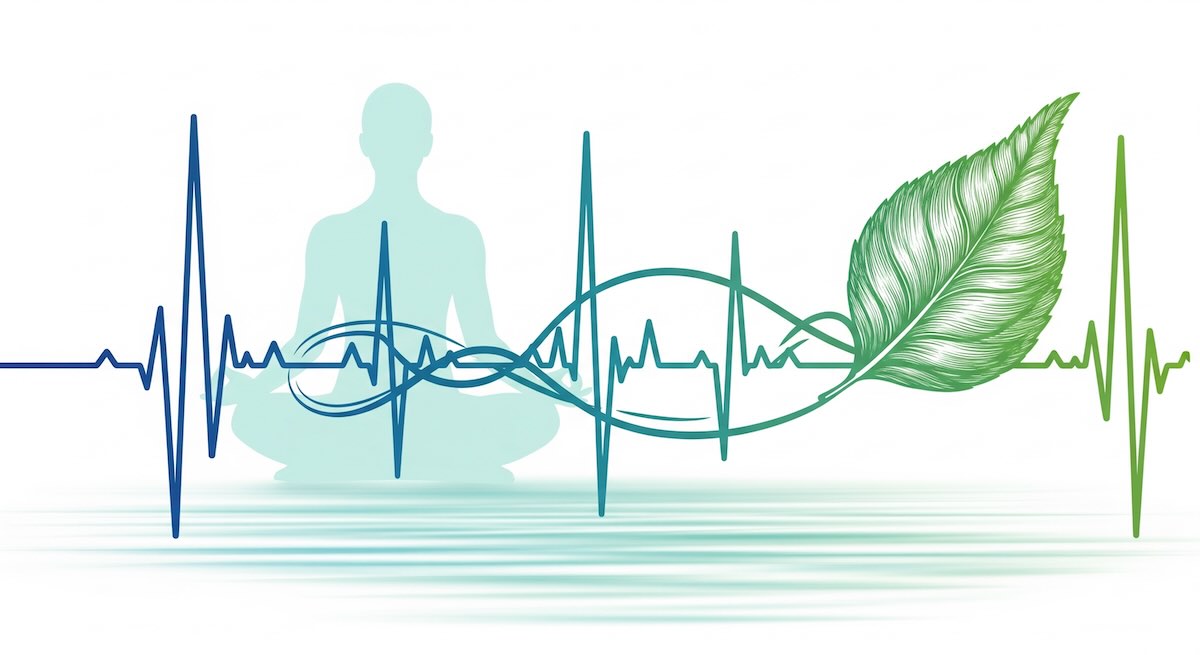Concerned about your blood pressure or heart rate? Looking for natural ways to support your cardiovascular health alongside your doctor’s recommendations? You might be surprised to learn that the simple act of meditation can have a measurable impact on lowering both blood pressure (BP) and heart rate (HR).
By calming your body’s stress response, meditation offers a powerful, evidence-based tool to complement lifestyle changes and medical treatments. This guide explains how meditation helps lower BP and HR, suggests effective techniques, and provides tips for incorporating this practice for better heart health.
Important Note: While meditation can be highly beneficial, it should be used as part of a comprehensive health plan. Always follow your doctor’s advice regarding medication and treatment for high blood pressure or heart conditions. Inform your doctor if you are starting a meditation practice.
Understanding the Connection: How Does Meditation Lower BP & HR?
Your cardiovascular system is highly responsive to your mental and emotional state. Stress, anxiety, and tension trigger the “fight-or-flight” response, releasing hormones that constrict blood vessels and increase heart rate. Meditation works by actively counteracting this:
- Activates the Relaxation Response: Meditation stimulates the parasympathetic nervous system, the body’s natural calming mechanism. This directly opposes the stress response.
- Slows Heart Rate: As the body relaxes, the heart doesn’t need to pump as forcefully or quickly.
- Relaxes Blood Vessels: The relaxation response can lead to vasodilation (widening of blood vessels), allowing blood to flow more easily and reducing pressure against vessel walls.
- Reduces Stress Hormones: Consistent practice helps lower circulating levels of stress hormones like cortisol and adrenaline, which contribute to elevated BP and HR.
- Decreases Sympathetic Tone: Over time, meditation can help reduce the overall “resting state” activity of the sympathetic (stress) nervous system.
- Improves Emotional Regulation: By managing stress and anxiety better, you reduce the frequency of emotional triggers that spike BP and HR.
Best Meditation Techniques for Cardiovascular Health
Practices emphasizing relaxation and sustained calm are particularly effective:
1. Mindfulness of Breath (with Emphasis on Exhale)
- Why it works: Directly engages the relaxation response. Focusing on a slightly longer exhale can enhance parasympathetic activation.
- How-to: Sit comfortably. Focus on the natural rhythm of your breath. Gradually, without straining, see if you can make your exhale slightly longer than your inhale (e.g., inhale for 4 counts, exhale for 6). Maintain a gentle, relaxed pace. If counting feels stressful, simply focus on the sensation of release with each out-breath.
2. Body Scan Meditation
- Why it works: Deeply relaxing, releases physical tension that can contribute to elevated BP/HR.
- How-to: Lie down or sit comfortably. Systematically bring gentle awareness to different parts of your body, noticing sensations and intentionally releasing any perceived tension with the out-breath. (See previous articles for detailed steps).
3. Guided Relaxation Meditations
- Why it works: Uses verbal cues and imagery to induce deep physical and mental relaxation.
- How-to: Find guided meditations specifically designed for relaxation, stress reduction, or lowering blood pressure on apps or online resources. Follow the narrator’s instructions.
4. Loving-Kindness Meditation (Metta)
- Why it works: Cultivating positive emotions like kindness and compassion can reduce stress and promote feelings of well-being, indirectly supporting cardiovascular health.
- How-to: Focus on generating feelings of warmth and well-wishing towards yourself and others. (See previous articles for detailed steps.)
Practical Tips for Meditating for BP & HR
- Consistency is Key: Aim for regular sessions, ideally 10-20 minutes once or twice daily. Consistent practice yields the best physiological benefits.
- Practice at a Calm Time: Choose a time when you can relax without feeling rushed.
- Comfortable Posture: Sit or lie down comfortably to allow for maximum physical relaxation.
- Monitor (as advised by doctor): If you monitor your BP/HR at home, you might notice changes over time with regular practice, but don’t become overly focused on immediate results during a session. Discuss monitoring with your doctor.
- Don’t Strain: Avoid forceful breathing or trying too hard to relax. Gentleness is key.
- Combine with Lifestyle: Meditation works best as part of a heart-healthy lifestyle, including appropriate diet, exercise, and adherence to medical advice.
Managing Expectations
- Gradual Effects: While you might feel calmer immediately, the sustained effects on BP and HR typically build over weeks and months of consistent practice.
- Individual Variation: The degree of change can vary from person to person.
- Not a Substitute for Medication: Never stop or change prescribed medications without consulting your doctor, even if you feel meditation is helping.
- Focus on Well-being: Approach meditation as a way to cultivate overall calm and well-being, with potential cardiovascular benefits as a positive outcome.
Conclusion: Calming Your Way to Better Heart Health
Taking proactive steps for your cardiovascular health is empowering. Meditation offers a natural, accessible, and evidence-supported method to help lower blood pressure and heart rate by calming your body’s stress response and promoting deep relaxation. By incorporating practices like mindful breathing or body scans into your daily routine, alongside your doctor’s guidance and a healthy lifestyle, you can actively support your heart health and cultivate a greater sense of inner peace. Take a deep, gentle breath, your heart will thank you.




